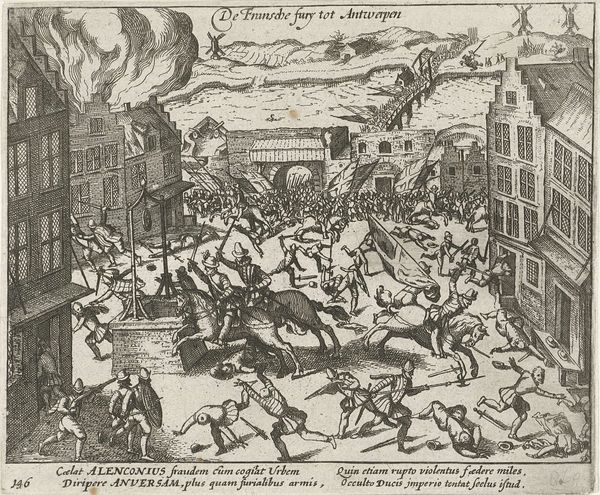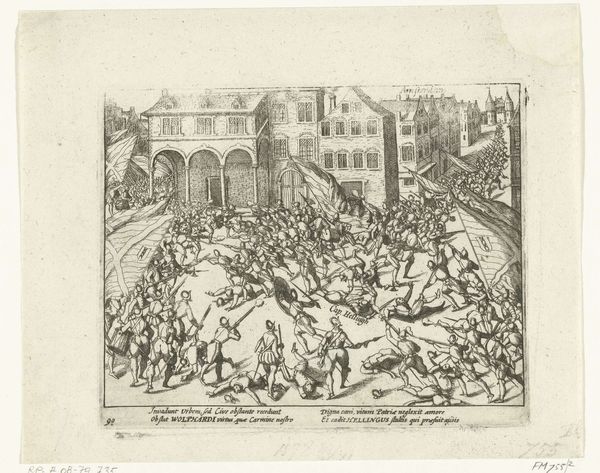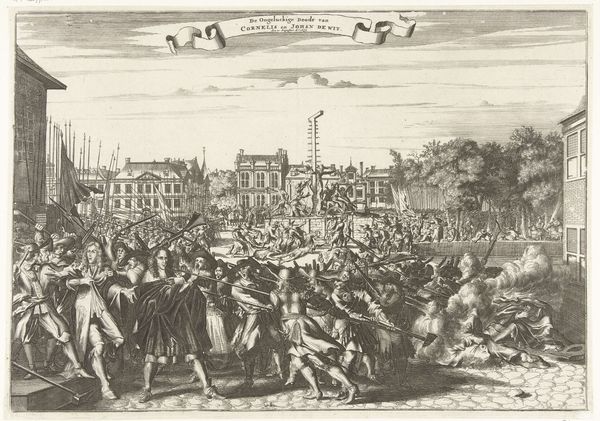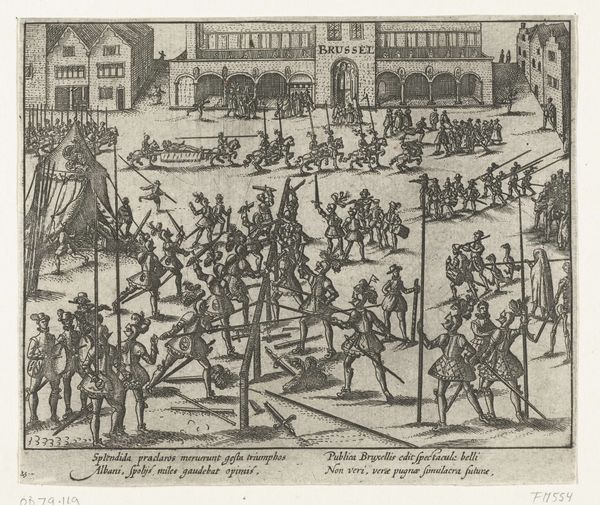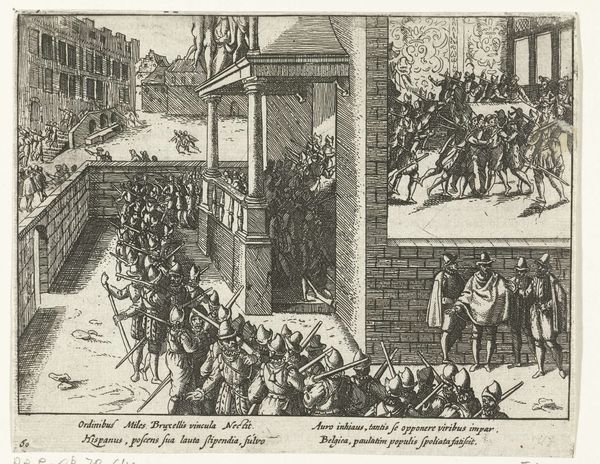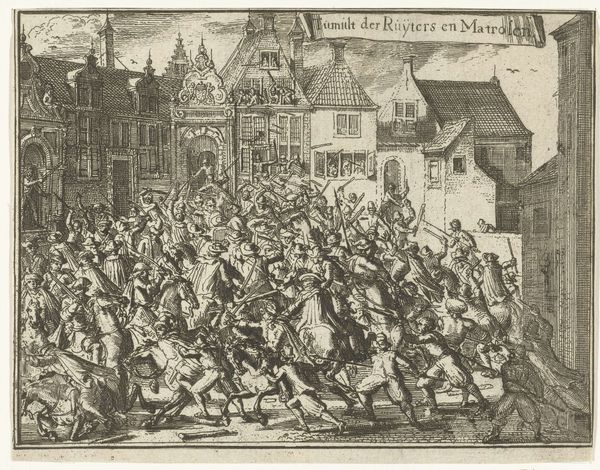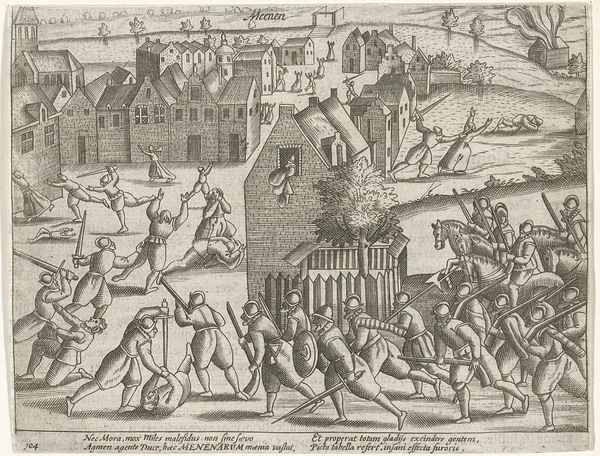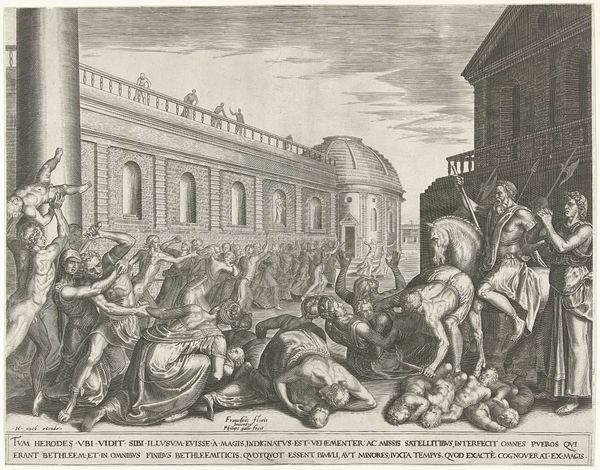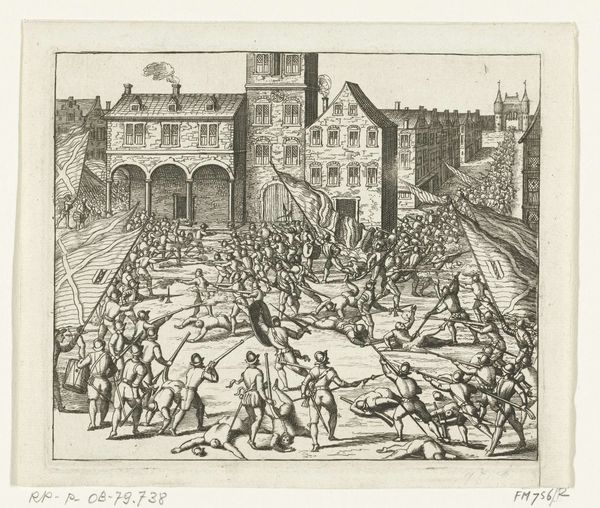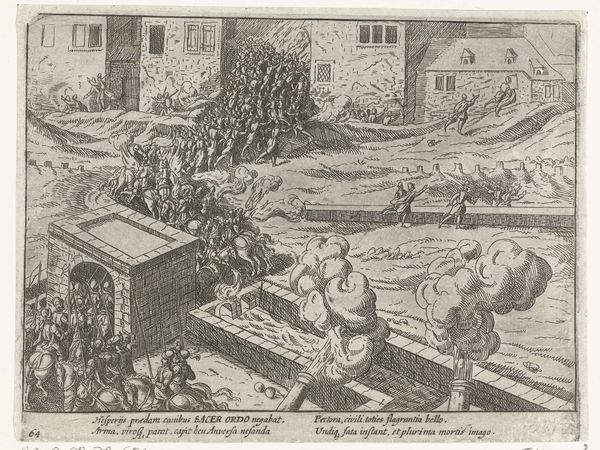
Dimensions: height 132 mm, width 156 mm
Copyright: Rijks Museum: Open Domain
Curator: "Kortrijk ingenomen door de Malcontenten, 1580," made between 1613 and 1615, is an engraving by an anonymous artist. It’s quite a chaotic scene; bodies strewn about, buildings on fire… What draws your eye when you look at this print? Editor: The density, I think. The sheer amount of detail that someone was able to achieve with this engraving technique. All those tiny lines... what do you see in terms of materials and how they tell the story? Curator: Exactly. We see history being produced here, both in the content of the image and in the very labor-intensive process of its creation. Engravings like this were essentially mass-produced images. Consider the function of prints like this. Who was the audience? What kind of labor was involved? Editor: I suppose these prints served a similar function as news media does today, reaching a wider audience than painted works could. But who was doing the work, exactly? Curator: We don't know who made this particular print. Was it an individual craftsman, a workshop? The engraving itself required specific skills and tools. Copperplates were relatively expensive, representing an investment in disseminating this particular version of events. Think about the materials and processes necessary to reproduce these images – from the engraver's tools to the printing press. Editor: So, the consumption of imagery was tied directly to specific trades and technologies. It's less about the aesthetic skill of "an artist" and more about industrial image-making. Curator: Precisely! We see the social context of this historical event mediated through the materials and methods of artistic production. It compels us to consider not just what the print depicts, but how its production shaped its meaning and reach. Editor: It’s interesting to consider the socioeconomic factors that contributed to the production of this image rather than only seeing it as a depiction of an event. It's almost like an early form of photojournalism, shaped by commerce and distribution networks. Curator: Absolutely, seeing it as a commodity gives us valuable insight into its cultural significance at the time.
Comments
No comments
Be the first to comment and join the conversation on the ultimate creative platform.
